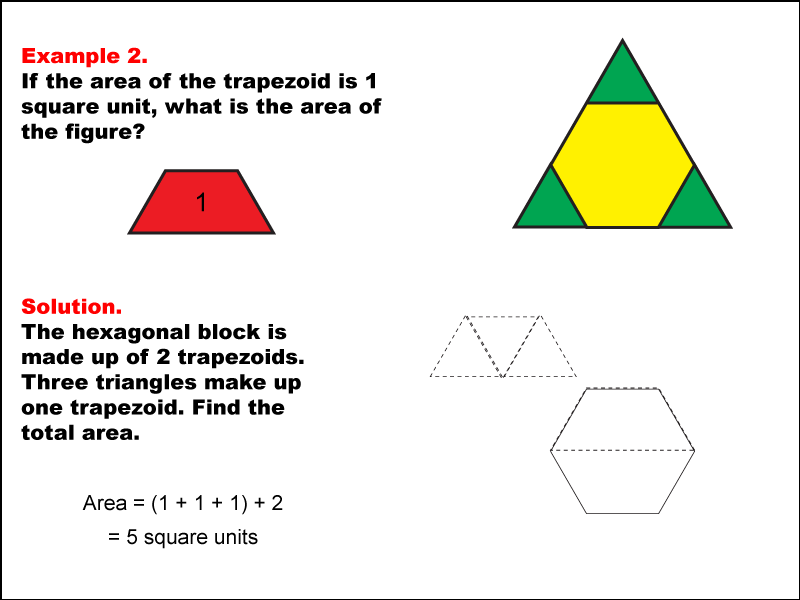
Display Title
Math Examples: Area with Pattern Blocks: Example 2
Display Title
Math Examples: Area with Pattern Blocks: Example 2

Topic
Geometry
Description
This example explores area calculation using a hexagonal figure composed of two trapezoids and three triangles. The trapezoids each have an area of 1 square unit, while the triangles contribute to the overall shape. The total area is determined by adding the areas of the trapezoids and triangles, resulting in 5 square units.
Pattern blocks provide a hands-on approach to learning geometry, allowing students to physically manipulate shapes and understand their properties. This collection of examples demonstrates how different combinations of shapes can form larger figures, reinforcing concepts of area addition and spatial reasoning.
Exposure to multiple worked examples is essential for students to develop a comprehensive understanding of geometric principles. Each example in this series presents a unique configuration of shapes, challenging students to apply their knowledge in various contexts and recognize the relationships between different pattern blocks.
Teacher Script: "Now we have a hexagon made of trapezoids and triangles. Notice that each trapezoid has an area of 1 square unit. Can you identify how many trapezoids and triangles are in this figure? How do you think we can calculate the total area? Remember, we need to consider both the trapezoids and the triangles in our calculation."
For a complete collection of math examples related to Geometry click on this link: Math Examples: Area with Pattern Blocks Collection.
| Common Core Standards | CCSS.MATH.CONTENT.6.G.A.1 |
|---|---|
| Grade Range | 6 - 7 |
| Curriculum Nodes |
Geometry • Polygons • Applications of Polygons |
| Copyright Year | 2024 |
| Keywords | area with tiles |